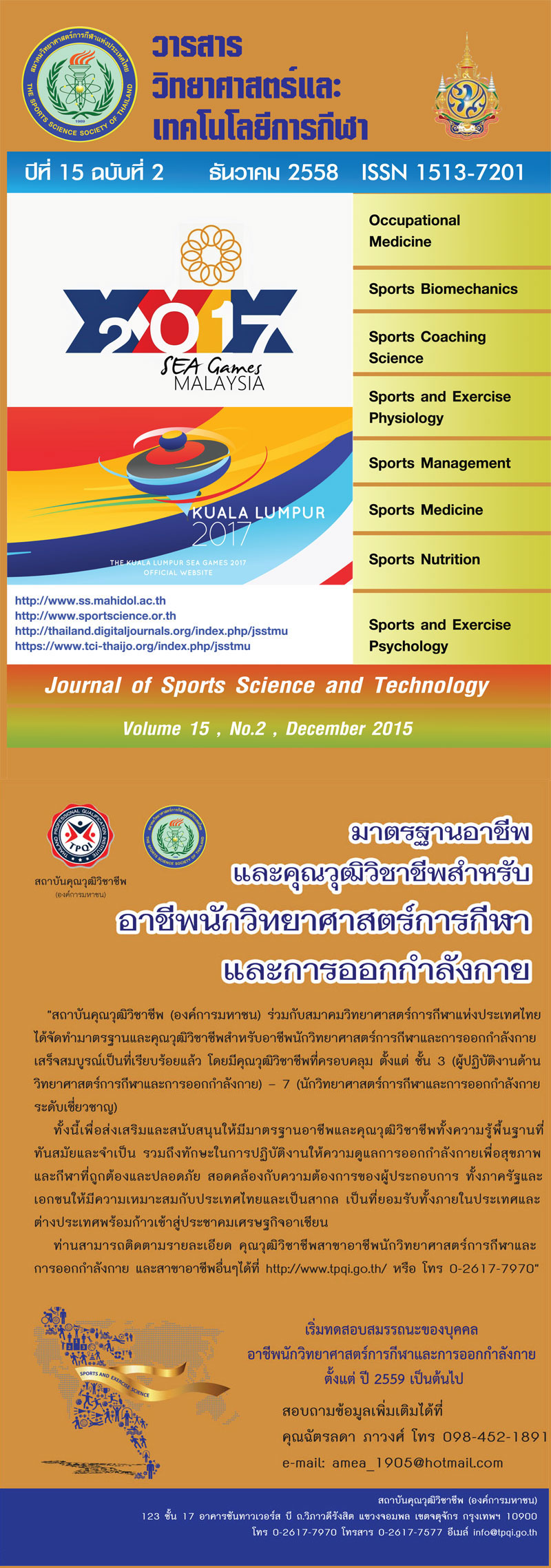THE COMPARISON OF IMAGERY TRAINING COMBINED WITH SERVING SKILL TRAINING CONTINUOUS AND NON-CONTINUOUS ON THE ACCURACY OF SERVING, HEART RATE AND SALIVARY ALPHA-AMYLASE DURING SERVING IN SEPAK TAKRAW ATHLETES
Keywords:
Imagery training, Accuracy of serving, Heart rate, Salivary alpha-amylase, Sepak Takraw AthletesAbstract
The purpose of this research was to examine the imagery training combined with serving skill training continuous and non-continuous on the accuracy of serving, heart rate and salivary alpha-amylase during serving in Sepak Takraw athletes. The subjects consisted of 27 male Sepak Takraw athletes of Mengraimaharaj Vittayakom School (average age 15.37±0.79 years) were randomized into 3 groups; group 1: subjects were trained imagery combined with serving skill training continuous 4 weeks (3 times/week), group 2: subjects were trained imagery combined with serving skill training non-continuous 4 weeks (3 times/week), and group 3: control group, no training. The accuracy of serving, heart rate during serving and salivary alpha-amy;ase during serving were tested before and after 4-week training. Data was statistically analyzed at the 0.05 level of significance. The results showed that the accuracy of serving was statistically significantly improved after 4-week imagery combined with serving skill continuous training (p=0.026). Subject, of group 2: imagery combined with serving skill training non-continuous, were tended to improve their accuracy of serving with no statistically significant difference (p=0.061). Moreover, the results were not found the statistically significant difference of heart rate and salivary alpha-amylase during serving before and after 4-week training in all groups. In conclusion, the combination of imagery and physical training should be trained continuous because it would help athletes create their good experience of performance. So, they can transfer the experience (of their mind) to perform in the real situation (physical training) that could improve their skill performance.
(Journal of Sports Science and Technology 2015; 15(2); 101-110)






